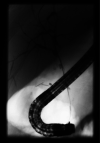Immunoglobulin G4-Seronegative Autoimmune Cholangiopathy With Pancreatic and Hepatic Involvement Mimicking as Primary Sclerosing Cholangitis
- PMID: 37091206
- PMCID: PMC10118323
- DOI: 10.14309/crj.0000000000001044
Immunoglobulin G4-Seronegative Autoimmune Cholangiopathy With Pancreatic and Hepatic Involvement Mimicking as Primary Sclerosing Cholangitis
Abstract
Immunoglobulin G4-seronegative autoimmune cholangiopathy is a rare cause of biliary strictures. We describe a 27-year-old man presenting with elevated liver enzymes, recurrent cholangitis/bacteremia, biliary strictures, and normal immunoglobulin G4 levels, who was initially diagnosed with primary sclerosing cholangitis, and later listed for transplantation for recurrent bacteremia. Subsequent surveillance imaging demonstrated morphologic changes consistent with biliary strictures and autoimmune pancreatitis. Initiating corticosteroids resulted in liver enzyme normalization and stricture improvement. Diagnosing seronegative autoimmune cholangiopathy remains challenging given similar presentation to primary sclerosing cholangitis. This case highlights importance of a wide differential for biliary strictures, with increased suspicion in those developing pancreatic changes in this setting.
Keywords: IgG4 cholangiopathy; PSC; autoimmune pancreatitis; biliary strictures; primary sclerosing cholangitis.
© 2023 The Author(s). Published by Wolters Kluwer Health, Inc. on behalf of The American College of Gastroenterology.
Figures





Similar articles
-
Immunoglobulin G4-associated sclerosing cholangitis mimicking cholangiocarcinoma.Hong Kong Med J. 2010 Apr;16(2):149-52. Hong Kong Med J. 2010. PMID: 20354252
-
Autoimmune Biliary Diseases: A Review of Primary Biliary Cholangitis, Primary Sclerosing Cholangitis, Immunoglobulin G4-Related Sclerosing Cholangitis, and Autoimmune Hepatitis.Surg Clin North Am. 2024 Dec;104(6):1249-1261. doi: 10.1016/j.suc.2024.04.010. Epub 2024 Sep 12. Surg Clin North Am. 2024. PMID: 39448126 Review.
-
Diagnosing Biliary Strictures: Distinguishing IgG4-Related Sclerosing Cholangitis From Cholangiocarcinoma and Primary Sclerosing Cholangitis.Mayo Clin Proc Innov Qual Outcomes. 2021 Jun 10;5(3):535-541. doi: 10.1016/j.mayocpiqo.2021.03.005. eCollection 2021 Jun. Mayo Clin Proc Innov Qual Outcomes. 2021. PMID: 34195545 Free PMC article. Review.
-
Immunoglobulin G4-related sclerosing cholangitis.Korean J Intern Med. 2018 Sep;33(5):841-850. doi: 10.3904/kjim.2018.018. Epub 2018 Jul 27. Korean J Intern Med. 2018. PMID: 30045615 Free PMC article. Review.
-
A case of sclerosing cholangitis without pancreatic involvement thought to be associated with autoimmunity.Intern Med. 2011;50(5):433-8. doi: 10.2169/internalmedicine.50.4471. Epub 2011 Mar 1. Intern Med. 2011. PMID: 21372453
Cited by
-
Mirizzi syndrome masquerading as gallbladder carcinoma: a case report on diagnostic challenges and multidisciplinary management.Front Med (Lausanne). 2025 Jun 2;12:1586112. doi: 10.3389/fmed.2025.1586112. eCollection 2025. Front Med (Lausanne). 2025. PMID: 40529141 Free PMC article.
References
-
- Rodrigues T, Komanduri S. Seronegative type I autoimmune pancreatitis with immunoglobulin G4-related disease triggered by the pfizer-biontech COVID-19 vaccine. Gastrointest Endosc. 2022;95(6):AB36.
Publication types
LinkOut - more resources
Full Text Sources

